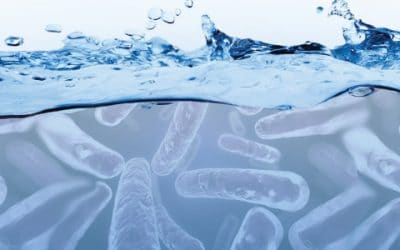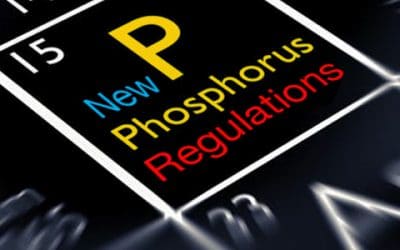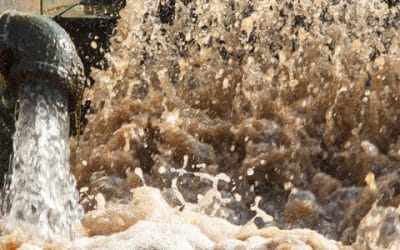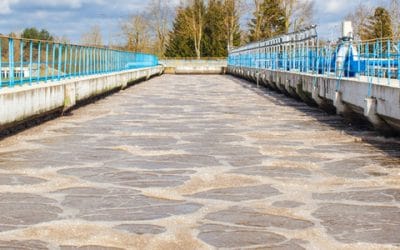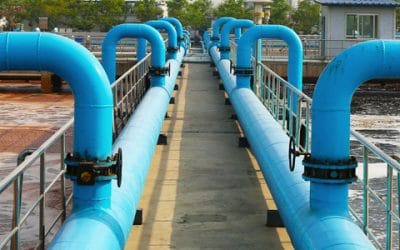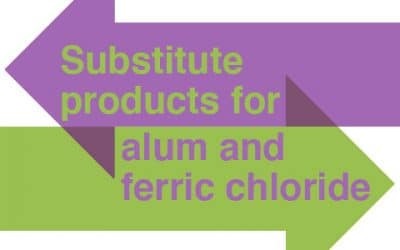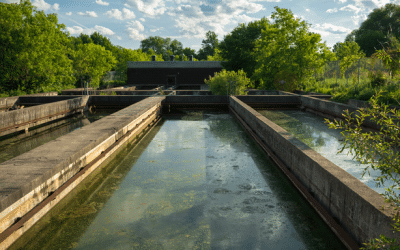IN THE NEWS
Have you been watching the news?
Water problems are a growing concern, not only in your local community but throughout the entire world. Take a few moments to follow what news sources are saying about the remarkable results that ATS Innova is creating with its clean water solutions.
ATS Brazil Signs Contract for TwinOxide® Distribution
As ATS Brazil continues to grow within the water treatment industry, we are happy to announce the signing of a contract for TwinOxide distribution. The product is an advanced and unique delivery system of two powder products working in tandem with water. How Does...
The Uncomfortable Reality of Unclean Drinking Water
Today, is the 5th annual Imagine a Day Without Water - luckily something most of us don't have to worry about; however, that's not the case in a lot of the developing world. It’s an uncomfortable and very concerning fact that 663 million people worldwide...
ATS Innova Delivers Sustainable Clean Water to Mali African Village
Nearly 700 million people on our planet lack access to safe drinking water. Every 21 seconds, a child dies of water-related disease. In the U.S. and other developed countries, we take our drinking water for granted. We turn on the tap and out comes treated, clean, and...
Worsening Algal Blooms – What You Should Know
Summer may be winding down, but toxic algae is just heating up. It feels like a broken record with year-after-year of worsening algal blooms nationwide. It begins when the temps heat up and releases toxic cyanobacteria, (otherwise known as HABs) into the water. These...
ATS Celebrates 40 Years in the Water Treatment Business
It’s 1979 and Robert Allred is armed with water treatment chemicals, selling them out of his pea green 1970 Chevy station wagon. Later that year, ATS was born. Allred’s desire was to provide a level of service the client needed and deserved, as well as the freedom to...
Do You Know the Drinking Water Regulations? Are You in Compliance?
Advancements in water treatment have evolved in the last number of years, ensuring clean and safe drinking water for communities. To allow for this, the EPA has set legal limits on many contaminants for the safety of human health. In fact, the Safe Drinking Water Act...
ATS do Brasil Announces Water Treatment Solutions Bid for Campinas-Based SANASA
ATS do Brasil, a subsidiary of ATS and prominent drinking water and wastewater treatment company, is happy to announce winning the water treatment bid with SANASA, a leading treatment company located in Campinas Brazil. Read about the bid in today’s blog post and how...
Will ATS Innova’s New Water Treatment Probiotics Product Line Work for Me?
Just as probiotics work to correct health issues in the gut, it can do the same for wastewater treatment. Probiotics make up very small organic molecules that improves existing microbial activity in wastewater; they reduce sludge, cut down on odor, and control BOD and...
Experiencing Source Water Quality, Including Algal Blooms?
We see it all the time. With the onset of summer, calls come into water treatment plants or city offices, complaining about the green gunk and awful smell in lakes, rivers, and lagoons. Not only is it an eye-sore (who wants to go swimming in that or taste it in your...
Phos58™: The Unique Rare Earth Metal that is Changing How We Treat Wastewater
Rare earth metals have been used for thousands of years for many uses. One of the applications includes treating wastewater, specifically regarding phosphorus removal. Phos58, a rare earth chloride solution with high performance, is a water-soluble coagulant that has...
How Innova MB™ Products Promote Biological Oxidation in Wastewater
Just like an ecosystem needs oxygen to sustain life, the same goes with treating wastewater. By introducing oxygen in the water, it aerates the water and kills off harmful microorganisms. When a reduction in biochemical or biological oxidation occurs,...
ATS Announces Partnership with Probiotic Solutions for Microbial Wastewater Treatment
ATS Innova has signed a contract with Probiotic Solutions – a concentrated liquid wastewater remediation company located in Gilbert, AZ. The company features Micro Carbon Technology®, and together with ATS, offers the best microbial wastewater treatment on the market....
Less than Stellar Wastewater Treatment? Why Nano-Molecular Carbon Beats the Same Ole’ Same Ole’
Wastewater treatment continues to be a challenge and will always be one – however, if you’re dealing with less than the best treatment, it may be time to re-think your solutions. Nano-Molecular Carbon is at the forefront of many advanced solutions with ATS...
What Are the New State Phosphorus Regulations I Need to Know?
Phosphorus removal has been and continues to be a big challenge, more now than ever before. You may wonder what’s the big deal? Since you can find phosphorus in nearly every fertilizer manufactured commercially, it affects our watershed. After crops are fertilized,...
How LuminUltra® Works for Microbial Monitoring of Water Systems
Have you ever wondered about the impact of uncontrolled biological growth in water systems? Non-pathogenic microbes can consume disinfectant residual, promote biofilm harboring pathogens, and promote corrosion to systems. However, microbial monitoring in...
ATS Collaborates with LuminUltra for Microbial Testing
ATS announced a press release yesterday that included the contract signing of a strategic alliance with Canada-based LuminUltra. Together, ATS and LuminUltra can bring smart solutions in real time with monitoring microbes in water and offering the...
Why Total Organic Carbon Reduction is Essential for Safe Drinking Water
TOC is organic matter, or in other words, any carbon-based contaminant. It contains thousands of parts, which includes colloids, compounds, macroscopic particles, and dissolved macromolecules. It’s also dangerous if not reduced. Total organic carbon...
Why Wastewater Enzymes are Illegal in Treatment Facilities
Since the massive fatberg found in Wales took the mainstream media by storm, the topic has been making the rounds on the blogosphere – ours included. FOG and other things dumped down the sink or toilet result in the accumulation of sludge, which then backs...
Why Using the Wrong Wastewater Treatment Chemical in the Wrong Place Can be Detrimental
As all water operators know, the use of coagulants is the first step of water treatment, and among chemicals used is ferric chloride (Iron III). It’s the coagulant of choice used in many sanitary wastewater treatment programs, industrial applications, and...
Discover Wastewater Genomic Mapping: Decoding the Best Microbes to Use
All living organisms contain DNA – including living ecosystems and living wastewater treatment. The scientific research project, known as the Human Genome Project started in 1990 and took more than a decade to complete and $2.7 billion. The goal included...
THE Dream Team for the Best Wastewater Treatment
Wastewater treatment facilities in the United States process approximately 34 billion gallons of wastewater every day. Think about the expense that entails. Now think about what you spend annually and whether you’ve been spending more time and money on...
Top Reasons Sanitary System Overflow Dangers Your Community
If you’ve noticed all the press with the infamous fatberg in Wales this month, you know what happened and how it happened. However, the community may not know or care. The supposedly benign things they stuff down their sink or flush down their toilets, as you know,...
What’s a Wastewater Fatberg and How You’re Contributing to It
If you’ve seen the original Ghostbusters II, you would know that under New York, a massive red, molten lava, thick slime coated the sewers and eventually, pushed up through the manholes and started devouring everything. It took cars in its grasp and people started...
Do You Know the Condition of Your Wastewater Collection System?
Imagine you’re in charge of wastewater collection system maintenance when suddenly a recent storm overflows the sewer system. When combined sewers connect to wastewater treatment plants, they can become overburdened during combined sewer overflows or CSO...
Best Ways to Prevent Sanitary System Overflow
Sanitary System Overflow, or SSO, is a condition where untreated sewage becomes expelled from a sanitary sewer into the environment prior to reaching sewage treatment plants. When there’s rainfall, it’s commonly known as wet weather overflow. In developed...
Why Calcium Nitrate is a Scam and is Costing You in the Long Run
You may think using calcium nitrate is a cost-effective solution for wastewater management, but you’d be very wrong. Before getting into the nuts and bolts of the proven ineffectiveness and why it’s expensive, let’s first talk about calcium nitrate and...
Does Innova MB Just Send Hydrogen Sulfide in Wastewater Further Downstream?
Hydrogen sulfide in wastewater can cause immediate problems, as well as long-term problems. Many products take care of the issue upstream but don’t tackle it at the source, so it doesn’t send the problem further downstream. ATS Innova MB...
Hydrogen Sulfide Effects on Humans and Why Removing it is Critical
In the last blog post, we discussed the effects of hydrogen sulfide (H2S) on infrastructure and how an excess of the colorless gas can corrode pipes, sewer lines, and other equipment. If that’s not bad enough, hydrogen sulfide effects can also corrode...
Why H2S Results in Biogenic Sulfide Corrosion and How to Eliminate it
The development of H2S in sanitary sewer systems create major problems, including corrosion that carries its own challenges. When the anaerobic slime layer from submerged pipe walls rise into an airway portion of the sewer pipe and reacts with bacteria and...
Old Versus New Bioaugmentation: Why It’s Better Than Ever
Wastewater bioaugmentation, having been around for decades, is a way to improve the reduction of organic solids and odors. Advancements in environmental biotechnology allow for designing of better, more effective products. The result is the introduction of...
Have Questions About How Wastewater Microorganisms Work?
You can find microbes (also called microorganisms) in the air, as well as soil, lakes, and oceans. They’re all over our body, both inside and out. Moreover, even though we can't see them, microbes have a massive impact on us and our environment. In fact,...
Tips for Flood-Proofing Wastewater Treatment Plants
When it comes to Mother Nature and flooding, recent history has taught us just how quickly water can overflow banks and pose major problems for wastewater and water treatment plants. With the last hurricanes, flooding has become a major concern – particularly flash...
The Difference Between Enzymes and Bacillus Bacteria and Why Microbes are Superior
Wastewater treatment plants have a big job to do, so ensuring the right products used is crucial. Many plants use enzymes to treat water; however, they only do part of the job. Bioaugmentation wastewater treatment proves far more superior in aiding with...
Think Microbes for Better Aerobic Digestion and Sludge Dewatering
When it comes to oxygen, we need it to survive – that’s a given. Without it, our world would be a barren wasteland. Now picture thousands of species all co-existing with other creatures in this unique ecosystem, spewing hot life-giving chemicals like a...
Polymer Water Treatment Blend: The Perfect Balance
As a water treatment plant, your job is taking the waste from your customer’s property and treating it, so you can recycle it and use it again. Your customers couldn’t care less what happens after they flush their toilet or use their sink. In fact, they probably have...
Want an Alternative Treatment in Lift Station Odor Control with Higher Performance and Less Cost?
You know the odor, it makes you cringe. Hydrogen sulfide or “rotten egg” smell is unmistakable. No one wants to smell the horrible odor – especially when the community starts complaining. In addition, hydrogen sulfide is poisonous and presents serious...
Why Didn’t Bioaugmentation Work for You in the Past?
You may have used bioaugmentation to enhance your wastewater treatment or collection system with varying degrees of success. Wastewater bioaugmentation has been performed for many years by introducing outside microbes to the system, either from another...
Value of Water Infrastructure: Why We Can No Longer Ignore Reality
In last week’s blog post on the value of water, we focused on the importance of having safe, clean drinking water and the challenges it presents. In this week’s post, the topic is the value of water infrastructure, why we can no longer ignore reality. We've already...
The Value of Water: A Precious Commodity
There’s only so much water, and as much as we’d love to make more, this is all we have. We need to take care of what we have. The value of water isn’t something we can put a price tag on, yet we try. In many of our cities and communities, we tax potable...
Phosphorus Removal from Wastewater: Pinpointing Your Plant’s Approach
Phosphorus removal from wastewater is a widespread challenge. Many wastewater treatment plants have problems achieving and maintaining low phosphorus levels required by today's standards. How do wastewater plants treat phosphorus? Three traditional chemicals for...
How to Make Phosphorus Treatment Easier and Boost Plant Performance
Increasing phosphorus regulations means plants must change too With the negative effects of nutrient pollution on the environment and human health becoming more widely known, and as regulations increase, ‘coming close’ to complying isn’t usually going to cut it. If...
New and Updated Standards for Phosphate Removal From Wastewater
As phosphorus is not a new problem, some phosphorus removal standards have been in place for years. However, new standards are being implemented for previously unregulated industries, and certain existing standards, like the ones relating to phosphate removal from...
Phosphorus and Its Effect on Wastewater Plants
Years ago, our laundry detergent had other uses beyond just cleaning laundry. If you had an oil spill in a driveway, for example, you could pour a little Tide and water on it and then come out an hour later and rinse everything away, including the oil. Likewise, if...
Alum and Ferric Chloride: Pros, Cons, and Substitutes
How are alum and ferric chloride used in water treatment? As every water treater knows, coagulants are used in the first step of water treatment; they destabilize the water so micro flocks can begin to form. This is followed up by a polymer, which turns it into a...
TOC Reduction
It seems like it should be a simple problem to solve: Increase your total organic carbon (TOC) removal, decrease your dangerous DBPs, meet all federal and state water standards. But in practice, it's anything but simple. The Environmental Protection Agency requires...
Why Should I Use an Algaecide All Year Long?
Algaecide All Year Long Randy McIff, a water treatment expert at ATS Innova, explains why using an algaecide all year long is important for your water treatment facilities. From the Video: Randy Mciff: My name is Randy Mciff, and I'm the Director of Water and...
Reducing Backwash Sludge
Reduce Backwash Sludge Randy McIff, a water treatment expert at ATS Innova, discusses how you can reduce backwash sludge at your water treatment plants. From the Video: Randy McIff: My name is Randy McIff, and I'm the Director of Water and Waste Water Treatment with...
What Advantages are there to Using a Polymer Blend?
Advantages of Using Polymer Blends Randy McIff, director of water and wastewater treatment discusses advantages to using specific polymer blends to help your water treatment facility. From the Video: Randy Mciff: My name is Randy Mciff and I'm the director of water...
Taste and Odor Concerns with Water
With headlines around the country this year about lead in drinking water, people are worried. They want to know if there’s a metallic taste in their water, do they need to be concerned about lead? Or can they smell lead? What if their water has taste and odor...
Stage 2 DBP Compliance
The Stage 2 rules for disinfection byproducts are expected to prevent approximately 280 bladder cancer cases per year in the United States, 26 percent of which would have been fatal. The annual cost savings of fewer cancer cases is estimated between $763 million and...
Blue-Green Sludge: the Time to Prepare is Now
You can wait until blue-green sludge washes ashore. Or when a dense algae mat appears in the water. Or when you have to close a lake or reservoir, and tell irrigation users that the water is dangerous. But you'd be better off doing something about it now. Still in the...
What is Toxic Algae?
Why is Toxic Algae an Issue? One of ATS' expert water treatment consultants, Randy McIff, explains what toxic algae is, how it becomes a problem, and how to keep your community safe. My name is Randy McIff, and I’m the Director of Water and Wastewater Treatment with...
Algaecides Aren’t All Created Equal
Spoiler alert: Not all algaecides are created equal. In summer 2016 a cyanobacterial algal bloom popped up in a Utah reservoir. As a result, city officials closed the popular recreation spot. Residents worried that water officials would close their favorite watering...
Why Does My Water Taste Funny?
Why Does My Water Taste Funny? Randy McIff, a water treatment expert at ATS Innova, discusses the reason behind why does your water taste funny, and the underlying causes of these abnormal tastes. From the Video: My name is Randy McIff and I'm the Director of Water...
Toxic Algae: Bactericidal or Coagulation Solutions
Bactericidal products are your best defense against toxic algae. Last year there were unprecedented numbers of cyanobacteria outbreaks around the Western U.S. So this year, Utah water officials are gearing up early for toxic algae season. They've asked for two new...
Algae Outbreak Happens Overnight in Utah Reservoir
Algae Outbreak on the Way in 2017 For the past several years algae has begun to grow at records levels, closing beaches, lakes, reservoirs, and all types of public and private waterways. With the influx of rain and snow this year and continuing warmer temperatures,...
Why is Copper Sulfate a Problem?
Copper Sulfate is No Longer the Standard Randy McIff, a water treatment expert at ATS Innova, discusses some of the issues with using copper sulfate to treat water. There are alternative to regular copper sulfate. From the Video: My name is Randy McIff and I'm the...
Algal Bloom vs. Water Manager: You Can Beat the Sludge
One day it was a beautiful lake in Northern California, open to swimming—the next day it was covered with a toxic algal bloom. In 2016, toxic algal blooms popped up in more than 40 waterways across California. The toxic blue-green slime isn't a new phenomenon, but the...
What are TOCs?
What are Tocs? (Total Organic Carbon) Randy McIff, a water treatment expert at ATS Innova,describes what total organic carbon, or tocs are and how they can be reduced. From the Video: My name is Randy McIff and I'm the Director of Water and Waste Water Treatment with...
Why Do Oxidation Ditches Not Work as Well in the Winter?
Oxidation Ditches in Winter Randy McIff, a water treatment expert at ATS Innova, discusses some of the issues with oxidation ditches during the winter months. From the Video: Randy McIff: My name is Randy McIff and I'm the director of Water and Wastewater Treatment...
Kill Mussels and Slime While Meeting DBP Regulations
About a hundred years ago, the development of pre-chlorination and disinfection of water led to the end of epidemics of waterborne diseases. People in the U.S. with access to treated water no longer had to worry about deadly typhoid and cholera. But disinfection has...
Tap Water Can Be Deadly. How’s Your Total Organic Carbon?
Two treatment plants needed to reduce their total organic carbon (TOC) levels. They were both located in the same city—Birmingham, Alabama—and treated water from the same general area. But their total organic carbon situations were different, so they each required...
Manganese & Iron in Water: Dirty, Stinky and Gross, But Won’t Kill You
Are Your Customers Complaining About Water Stains? Abby’s water is staining her sinks, and she's getting strange spots on her laundered clothes. When she tried to clean the sinks with bleach, the stains got worse. Her problem? Manganese and iron in her water. Iron and...
The 411 on TriHalomethanes: Harmful, but Preventable
TriHalomethanes Can Cause a Public Relations Nightmare A water system in the Midwest exceeded the EPA's total trihalomethanes (TTHMs) limit and had to issue a public notice of the violation. Local news stations picked up the story, and water system managers and...
What are Haloacetic Acids (HAA5) and Why Do We Have Them?
Is a Serious Drinking Water Violation About To Hit Your Municipality? In August 2015, the city of Baltimore sent out a press release detailing an EPA violation for higher than maximum allowable levels of haloacetic acids (HAA5) above the maximum allowable limit in the...
How Reducing Your DBPs Can Save You from the EPA
The emergence of chlorinating drinking water over a century ago, is widely determined as one of the “most significant public health advances of the millennium.” Through chlorination of water, “life expectancy has been increased by 30 years since 1900,” infectious...
10 Reasons Why You Should Never Use Plain Old Copper Sulfate for Water Treatment
Treating Algae Blooms with Copper Sulfate Algae is one of the most common, and annoying, problems faced by water treatment plants and wastewater treatment plants. It’s a problem that requires swift action to ensure that it does not affect production or release toxins...
Taste and odor concerns disappear with ATS
You turn on the faucet to get a glass of water, and notice an unusual smell. You're not sure what it is, but it can't be the water, right? But when you take a sip, you realize it is the water, and it doesn't just stink—it tastes bad too. What do you do? You start...
Disinfectants that don’t create toxic trash
Safe, clean, pure, clear? All words that should describe the culinary water that comes out of every faucet in the U.S. But that's not always the case because of disinfection byproducts, even though the U.S. Environmental Protection Agency regulates the safety of the...
An Algaecide that Makes the Toxic Ooze Vanish
Hundreds of miles of Florida coastline choked by blue-green toxic ooze, shutting down businesses and beaches, killing tourism and endangering people and animals. The Florida algal bloom crept through waterways for months, just one of the many blooms appearing around...
Desludge, Reduce Backwashes, and Save
You need to desludge, and you need better water treatment solutions because you're running too many backwashes. Your sludge hauls are getting more and more frequent, and hurting your bottom line. Sludge hauls and backwashes are necessary parts of the water treatment...
Corrosive chemicals multiply water treatment costs
Since 1774 when Swedish chemist Carl Wilhelm Scheele discovered chlorine, scientists have been experimenting with the chemical element. Around the time of World War I, researchers discovered that injecting salt water with electrical current resulted in sodium...
Get the Best Water Treatment with the Right Chemistry
True story: A water treatment plant manager called us to evaluate his facility, determine if there were better chemicals and protocols, and find ways to save money. After getting our report, he was a little reluctant to implement our plan because of the cost. But he...
The art of smart wastewater solutions at Innova
You've got algae filling up your settling basin and clogging your wastewater system. Maybe quagga mussels have taken up residence in your equipment. Or are you producing too much sludge at your wastewater treatment plant? You have a wastewater treatments problem....
Flocculants, polymers: Our solutions save you money
Your average consumer doesn't want to hear about what goes on at their local wastewater treatment plant. They don't want to hear details of what happens after they flush the toilet or shut off the sink. They don't care what a flocculants are used or what a polymer...





